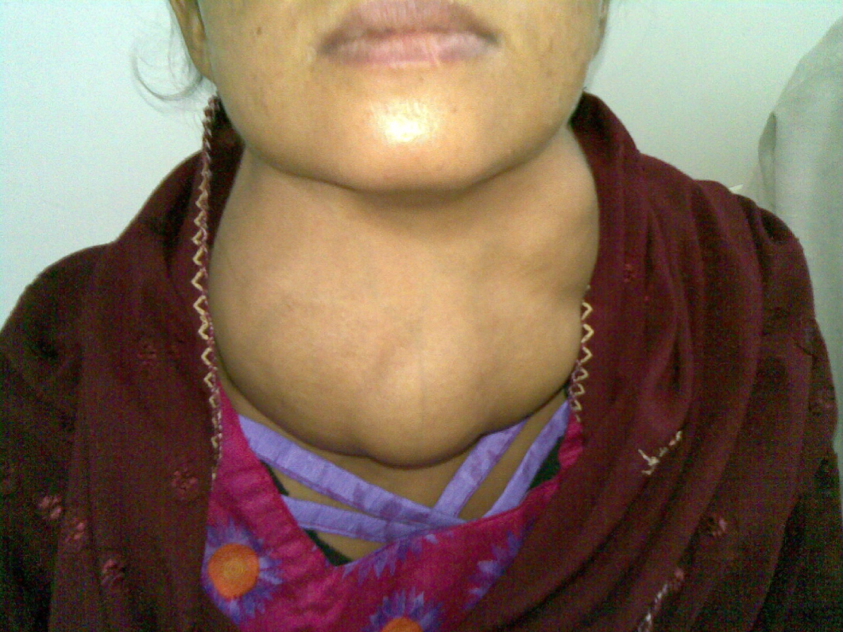Table of Contents
Overview – Non-Toxic Goitres
Non-toxic goitres are enlargements of the thyroid gland that occur in euthyroid individuals, without inflammation, infection, or malignancy. They are primarily caused by increased TSH stimulation due to iodine deficiency or physiologic metabolic demands. These goitres can present as diffuse or multinodular forms, often progressing from the former to the latter over time. Understanding their pathophysiology is important for recognising potential complications such as mechanical compression or progression to hyperthyroid states.
Definition
- Goitre: Enlargement of the thyroid gland
- Non-toxic Goitre: Enlargement of the thyroid gland in a euthyroid patient, not due to inflammation or neoplasia
Aetiology
Diffuse Goitre (Early Phase)
- Physiological states:
- Adolescence
- Pregnancy
- Lactation
- All require ↑ metabolic activity
- Iodine deficiency – the most common cause worldwide
- Other possible contributing factors:
- Genetic predisposition
- Environmental goitrogens (e.g. cassava, certain drugs)
Multinodular Goitre (Late Phase)
- Develops from a long-standing simple diffuse goitre
- Chronic iodine deficiency → prolonged TSH stimulation → follicular hyperplasia → nodularity
Pathogenesis
- Not neoplastic
- TSH-driven follicular hyperplasia due to iodine deficiency or increased metabolic demand
- Over time: Diffuse → nodular transformation
- Uneven TSH response among follicles leads to structural heterogeneity
Morphology
Diffuse Goitre:
- Mild
- Symmetrical
- Uniform glandular enlargement

Multinodular Goitre:
- Asymmetrical
- Multinodular and lobulated
- Can become massive
- Nodules:
- Unencapsulated
- Variable colloid content (often gelatinous brown)

Clinical Features
- Most patients remain euthyroid
- May be noticed incidentally or present with:
- Visible neck swelling
- Compressive symptoms in large goitres:
- Dysphagia
- Dyspnoea or airway obstruction
- Hoarseness (if recurrent laryngeal nerve affected)
Investigations
- Thyroid Function Tests:
- ↑ TSH (compensatory)
- Normal T3/T4 (unless advanced or decompensated)
- Ultrasound: To assess nodule characteristics
- Fine Needle Aspiration (FNA): If malignancy is suspected
- Radionuclide Scan: Distinguish cold vs hot nodules (only if symptoms suggest functional change)
Complications
- Mechanical:
- Compression of trachea or oesophagus
- Cosmetic concern
- Endocrine:
- Autonomous toxic nodule formation → progression to toxic multinodular goitre (hyperthyroid state)
Summary – Non-Toxic Goitres
Non-toxic goitres represent thyroid gland enlargement in the absence of inflammation, malignancy, or functional excess. Most cases stem from iodine deficiency and begin as diffuse goitres that may evolve into multinodular forms. Although typically euthyroid, patients may develop compressive symptoms or progress to hyperthyroidism. For a broader context, see our Endocrine Overview page.